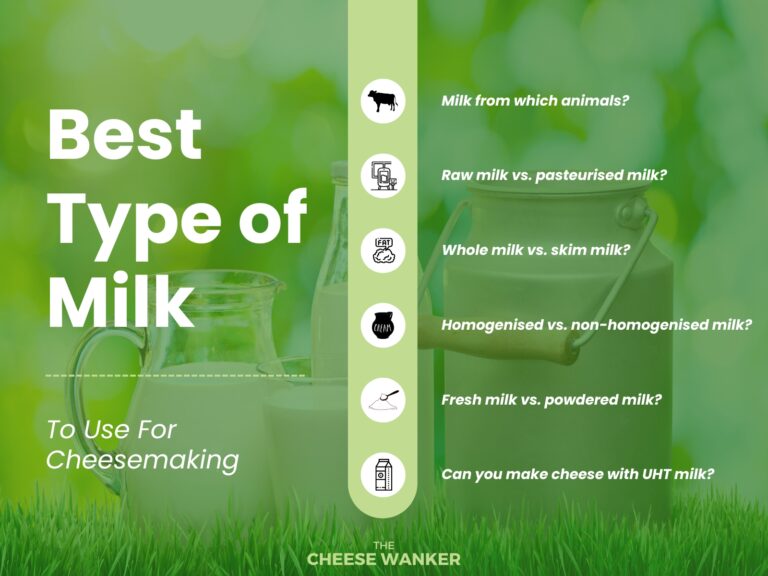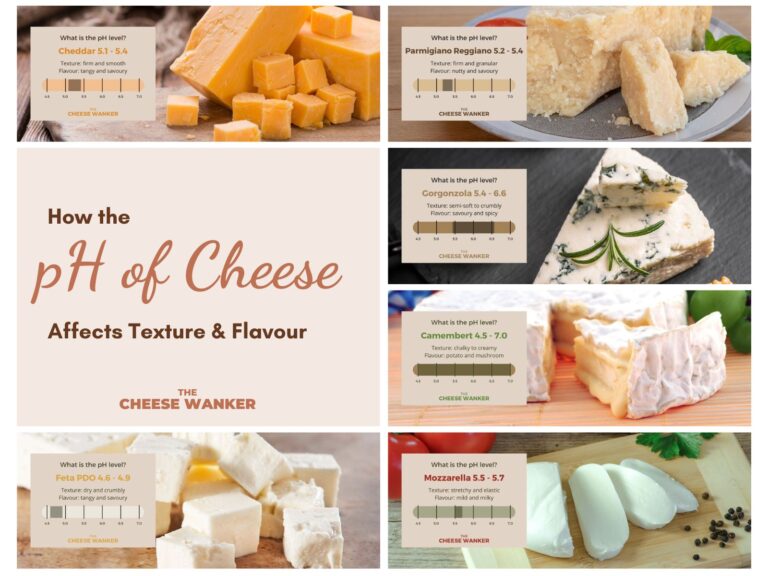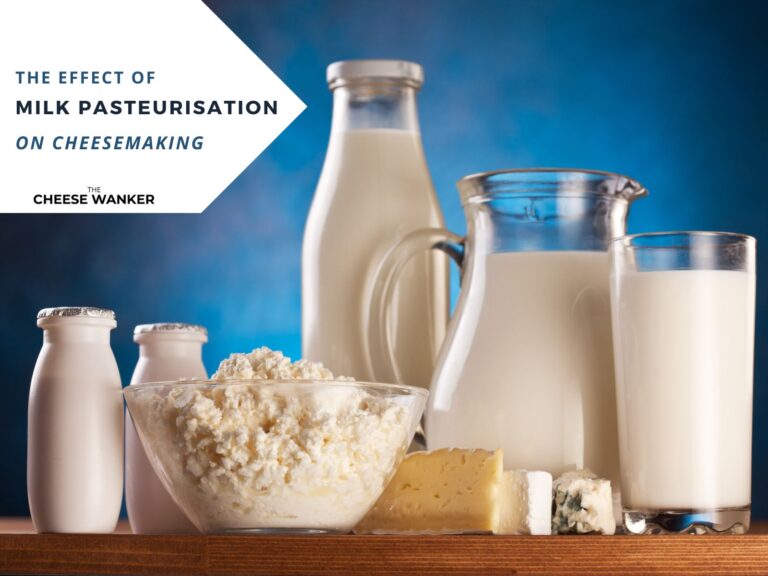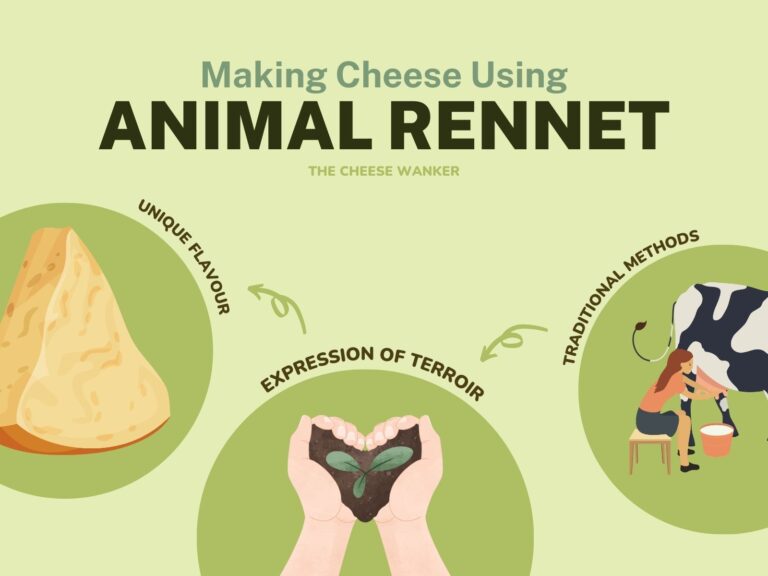It takes four basic ingredients to make most cheeses: milk, starter culture, coagulant and salt. Let’s have a look at cheese starter cultures and what they do to milk. Read on to learn about the different types of cultures used to make cheese. And find out where you can buy them.
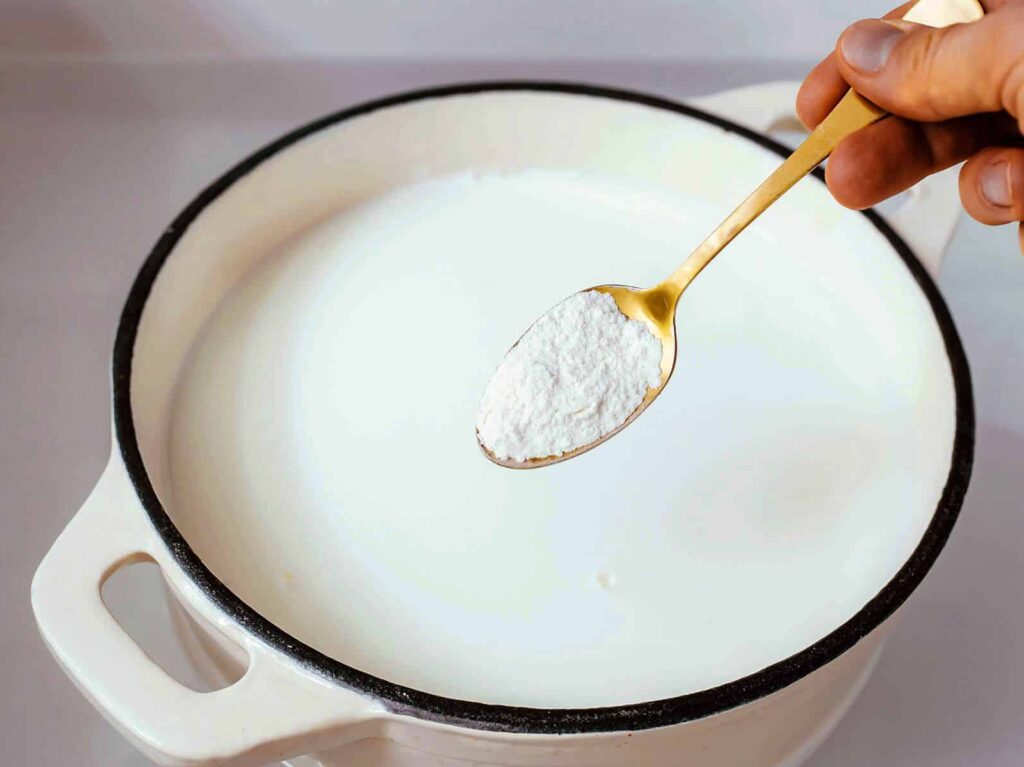
SEE ALSO: The four essential ingredients you need to make cheese →
The role of microorganisms in cheesemaking
The art of cheesemaking is indelibly connected to the cheesemaker’s ability to harness the growth and metabolism of microorganisms. Indeed, nurturing the beneficial bacteria and destroying harmful ones are equally as important for the quality and safety of the cheese.
The growth of harmful bacteria is largely controlled by maintaining the highest standard of hygiene throughout the handling of the milk and the cheesemaking process. On the other hand, encouraging the growth of beneficial microorganisms is under the control of the skilled cheesemaker and affineur (person who matures cheese).
This is where starter cultures come into play.
What starter cultures do to milk
As their name indicates, these cultures kick-start the transformation (fermentation) of milk into cheese. On a molecular level, starter cultures ferment the lactose in milk and convert it to lactic acid. Because of this, they are often referred to as lactic cultures.
As a matter of fact, those lactic acid bacteria rely on lactose fermentation for energy.
The formation of lactic acid creates an acidic (low pH) environment in the milk in which only certain bacteria can survive. Therefore, this process favours the spread of desirable lactic acid bacteria and eliminates other potentially harmful microorganisms.
Where do the microorganisms come from
Raw milk
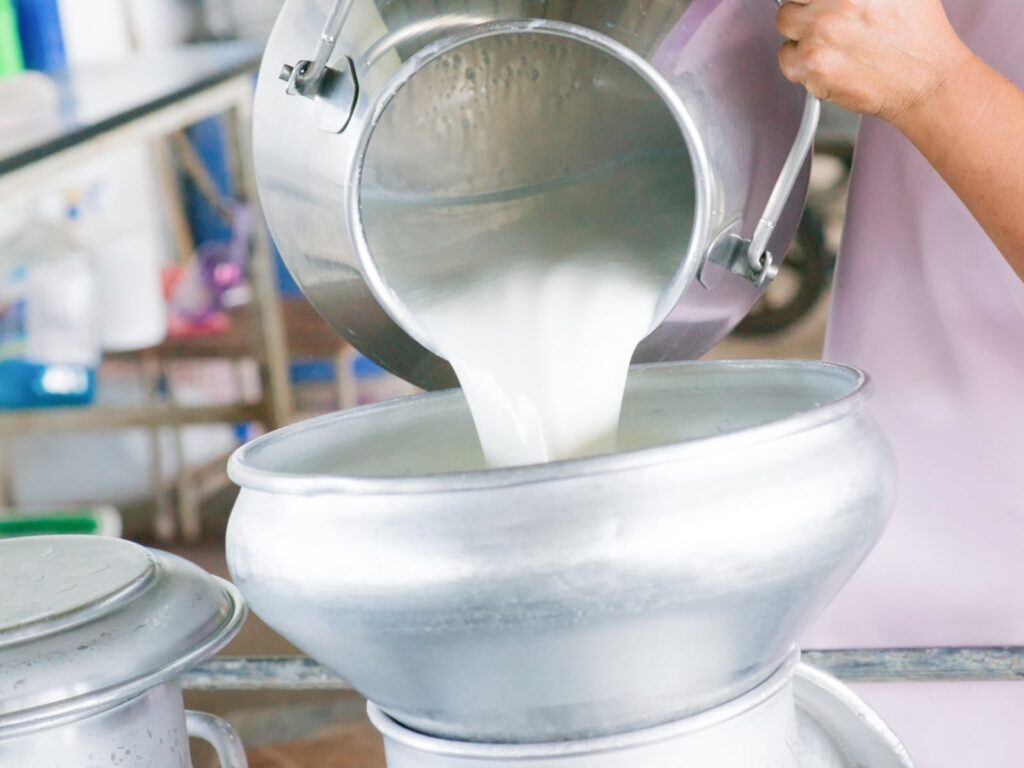
Traditionally, cheesemakers would rely on the natural microflora (bacteria that occur naturally) in raw, unpasteurised milk to start the fermentation process. Those good bacteria would come from various sources such as vegetation eaten by the animals and the soil.
Over time, artisans began to notice that the addition of a previously fermented batch of milk to fresh milk would improve the organoleptic qualities (aroma, texture and taste) of their cheese. Consequently, artisanal starter cultures grew in popularity.
Nowadays, there are only a small number of small-batch cheesemakers who rely on this method to make cheese.
Starter culture
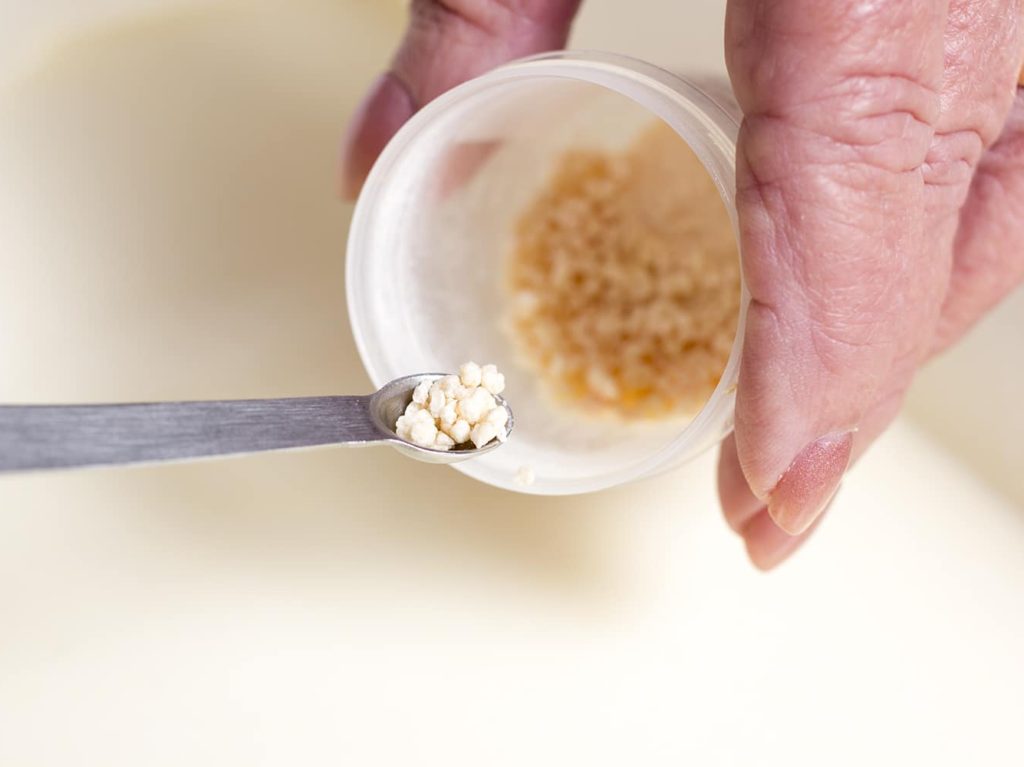
With the industrial revolution came large scale commercialisation of milk and cheese. As a result, pasteurisation became common practice in the dairy industry. While pasteurisation eliminated pathogenic bacteria from milk, it also destroyed the natural good bacteria.
Because of this, you would not be able to convert pasteurised milk into cheese without adding back some of those good bacteria.
One other reason why native cultures in raw milk are not used as frequently in modern times is the type of bacteria found in raw milk. Over time, the predominant bacteria found in raw milk has evolved from lactic acid bacteria to Pseudomonas.
Pseudomonas species are ubiquitous in water and plant seeds and some of them can be harmful to humans.
As a result of those changes, there was a growing need for commercial starter cultures. Nowadays, cheesemakers add such cultures to both raw and pasteurised milk during the early stages of cheesemaking.
Maturation rooms
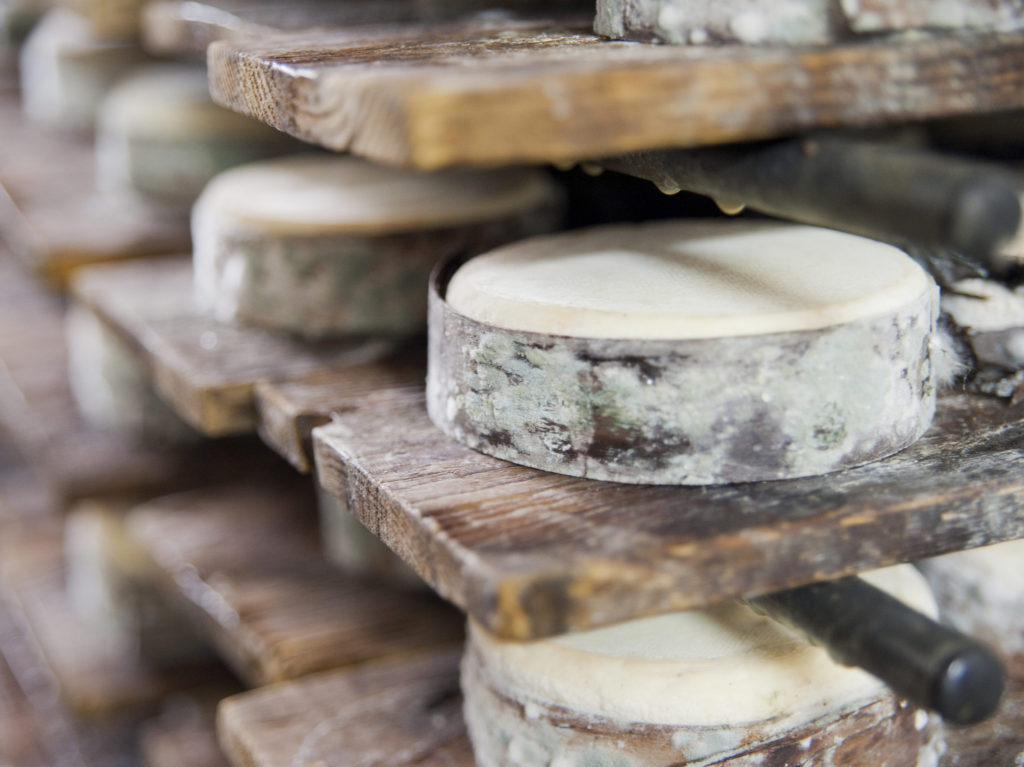
While the first two types of cultures we’ve discussed play an important role in the composition (formation) of the cheese, this particular type of bacteria aids the decomposition (maturation) of cheese. Such bacteria are present in the air or on surfaces in maturation rooms and caves. And the result of their influence can include the formation of bloomy rinds, blue veins and a soft texture.
Different types of cheese cultures
As you can imagine, there are many different types of cultures used in cheesemaking. And they all play various roles in forming the characteristics of the final cheese. Let’s have a look at some of the most common ones.
Primary mesophilic starter cultures
E.g. Lactococcus lactis subsp. lactis
Mesophilic cultures are typically most active at low temperatures within a range of 20-32°C (68-90°F). Hence, cheesemakers usually use such cultures to make low temperature (uncooked) and fresh cheeses.
While mesophilic cultures are inactive at temperatures above 39°C, they aren’t actually killed until temperatures exceed 45°C.
Primary thermophilic starter cultures
E.g. Streptococcus thermophilus, Lactobacillus helveticus and Lactobacillus delbrueckii subsp. bulgaricus
On the other hand, thermophilic cultures operate at much higher temperatures. The temperatures at which they thrive range from 37-45°C (98-113°F).
It is quite common for cheesemakers to use a combination of mesophiles and thermophiles to make cheeses that are gently cooked (under 45°C). In such a mixture, the thermophiles speed up lactic acid production during the cooking step.
And subsequently, the mesophiles (which were inactivated by the high temperature but not killed) take over once the curd cools down.
Moreover, Streptococcus thermophilus and Lactobacillus helveticus have a synergistic effect when used together. S. thermophilus produces formic acid from lactose which stimulates the growth of L. helveticus. As a result, L. helveticus breaks down more milk protein into amino acids and peptides which speed up the propagation of S. thermophilus.
Secondary starter cultures
E.g. Lactococcus lactis subsp. lactis bv. diacetylactis, Propionibacterium freudenreichii subsp. shermanii
These include non-starter cultures that are added to milk to produce either flavour attributes or carbon dioxide for eye formation. Secondary starters can be either mesophilic and thermophilic.
Adjunct starter cultures
E.g. Lactobacillus helveticus, Lactobacillus casei and Lactobacillus rhamnosus
Some strains of primary starter cultures can also be used as secondary starters in certain cheeses. Those are referred to as adjunct cultures and are typically used is much lower concentrations than the primary starters. Besides, their main role is not to produce lactic acid but rather assist in flavour development.
Some examples of cheeses made this way include Gouda, Cheddar and Parmesan.
Homofermentative cultures
E.g. Lactococcus lactis subsp. lactis
Cultures can be further categorised into homofermentative and heterofermentative bacteria. Under ideal conditions, homofermentative cultures convert lactose to more than 90% lactic acid. The remaining 10% is mostly acetic acid. Homofermentative cultures can be either mesophilic or thermophilic.
Heterofermentative cultures
E.g. Propionibacterium freudenreichii subsp. shermanii, Leuconostoc mesenteroides subsp. cremoris and Lactococcus lactis subsp. lactis bv. diacetylactis
On the other hand, heterofermentative cultures metabolise lactose to produce around 50% lactic acid and around 40% ethanol, acetaldehyde, acetic acid or carbon dioxide. As a matter of fact, heterofermentative bacteria are not typically used as primary starter cultures.
They are added to milk mostly as secondary cultures for flavour development or eye (hole) formation. The ethanol produced often reacts with the fatty acids in cheese to produce fruity flavours.
Propionibacterium freudenreichii subsp. Shermanii is used to make Swiss cheeses such as Emmentaler because it produces enough carbon dioxide to form large eyes. Some strains of heterofermentative bacteria can also metabolise the citric acid in cheese to produce diacetyl, acetic acid and carbon dioxide.
Those include Lactococcus lactis subsp. lactis bv. diacetylactis and Leuconostoc mesenteroides subsp. cremoris. They are added to Gouda, Edam and Havarti to convert citric acid into carbon dioxide and produce small eyes.
Which cultures should you use to make cheese?
The choice of culture when making a cheese is largely affected by tradition and recipes that have been passed from one generation to another. Indeed, the recipe for making specific cheeses such as Camembert, Gruyère and Cheddar all require different methods.
As a result, the temperature to which the curd and whey are heated varies from one cheese to another. Indeed, thermophilic cultures are used for cheeses that are cooked above 39°C. And mesophiles are added to milk to make cheeses with lower cook temperatures.
Moreover, traditional recipes from France, Italy and Spain use particular strains of starter bacteria taking into consideration their salt sensitivity, temperature sensitivity and their proteolytic activity. The latter is particular important because the way bacteria break down the milk’s protein has a significant impact on the flavour of the final cheese.
What are DVS & DVI cultures?
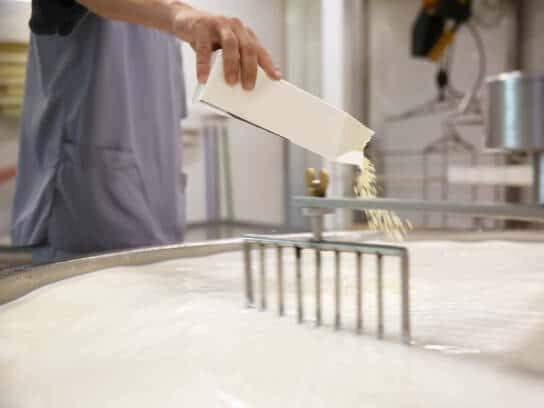
In the early days, bulk starter cultures were sold in the liquid form to add to milk. Over the last 20 years or so, those have been replaced with concentrates called Direct Vat Set (DVS) or Direct Vat Inoculation (DVI) cultures.
DVS and DVI cultures are essentially the same thing and contain a pre-defined mixture of Lactococci and Streptococcus thermophilus. Moreover, they are concentrated cell preparations containing between 10¹¹-10¹³ CFU/g. CFU stands for Colony Forming Unit and is a measure of the number of viable microbial cells in a sample.
Such concentrates are added directly to the milk without requiring any further handling by the cheesemaker. You can purchase them either in the frozen form or as freeze-dried pellets. A term that you will often see on commercial cultures is “lyophilized”.
Lyophilization is also known as freeze-drying and is a process used to preserve biological material. Overall, it removes the water from the sample by first freezing it then drying it under a vacuum.
How to store starter cultures
To preserve their activity, starter cultures have to be frozen at very low temperatures (under -40°C). This allows a certain consistency between batches in the rate and extent of lactic acid development. However, such freezers are very expensive and most artisanal cheesemakers cannot afford them.
As a matter of fact, most small batch cheesemakers use home freezers which only go down to -17°C. Because of this, their cultures will start to lose cell viability over months of storage.
Other factors that negatively impact cheese starter cultures
Bacteriophage
A bacteriophage is a virus that can infect lactic acid bacteria and destroy them in a very short period of time.
Antibiotics
Antibiotics present in milk will also kill of a significant portion of bacteria from the culture. However, with responsible farming practices, this is very rarely a problem.
Residual sanitiser on equipment
Sanitising all cheesemaking equipment in-between makes is a critical step in maintaining hygiene. However, if the cheesemaker does not entirely remove residues of quaternary ammonium sanitisers, the contamination will reduce starter activity in milk.
Cross-contamination
Some starter cultures produce antibiotics called bacteriocins which can attack other bacteria. Therefore, mixing two different sets of starters could potentially reduce the activity of both.
Where can you buy cheese starter cultures from?
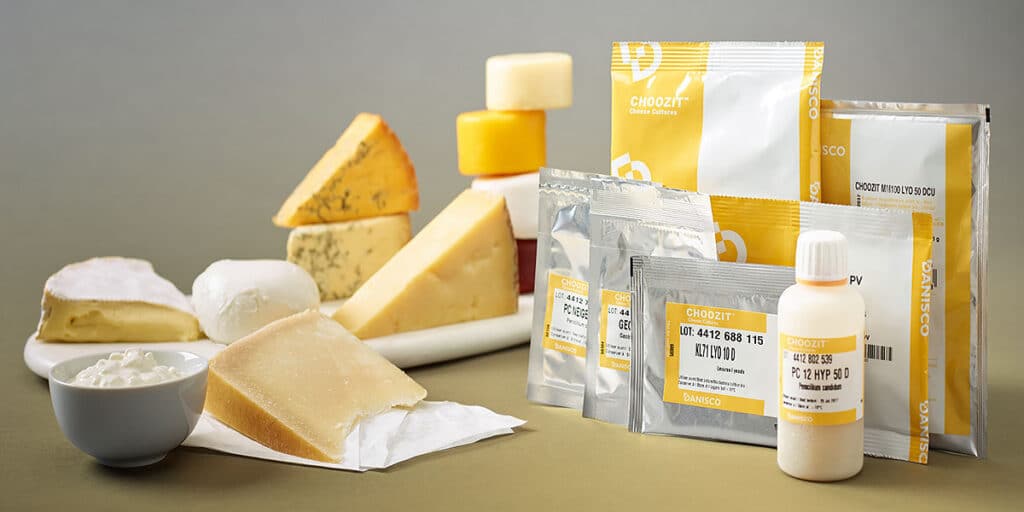
Depending on whether you are a commercial or a home cheesemaker, you can get cheese starter cultures from different places. Some major corporations selling cultures internationally include Danisco, Biena, Saccico Clerici, Chr. Hansen and DSM.
For the small batch cheesemaker, there are a growing number of online businesses that sell curated cultures for different types of cheeses. Some of our favourites are Cheese Needs, Little Green Workshops and New England Cheesemaking Supply Co.
Summary
Thank you for reading our comprehensive guide to cheese starter cultures. As you can see, the types of cultures used in cheesemaking have changed significantly over time. And the availability of commercial cultures from small batch retailers has allowed a lot of artisanal cheesemakers to experiment at home.
The latest wave we are seeing is a return to natural cheesemaking using artisanal cultures. Have you tried your hand at making cheese? Let me know your preferred method and culture in the comments below.
